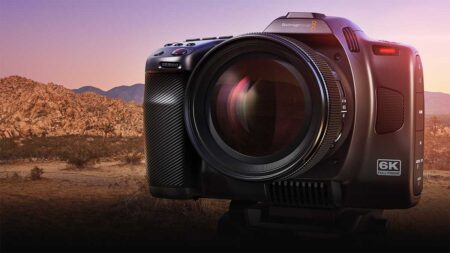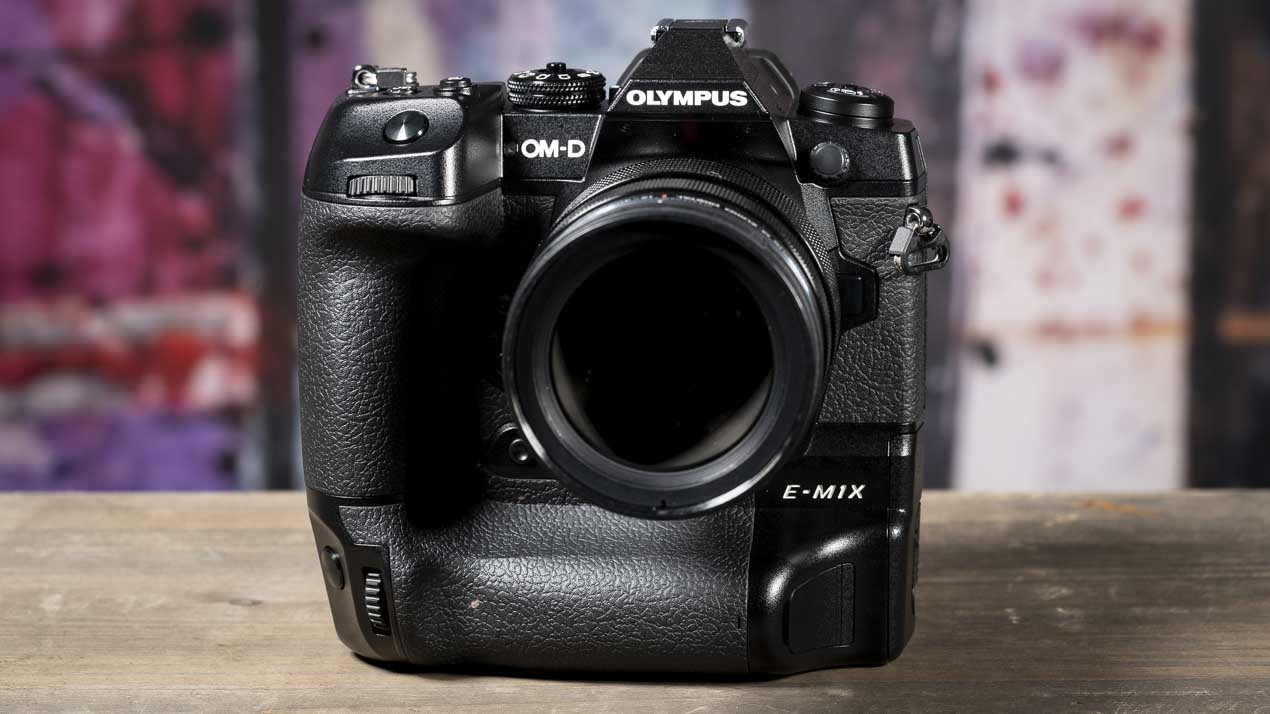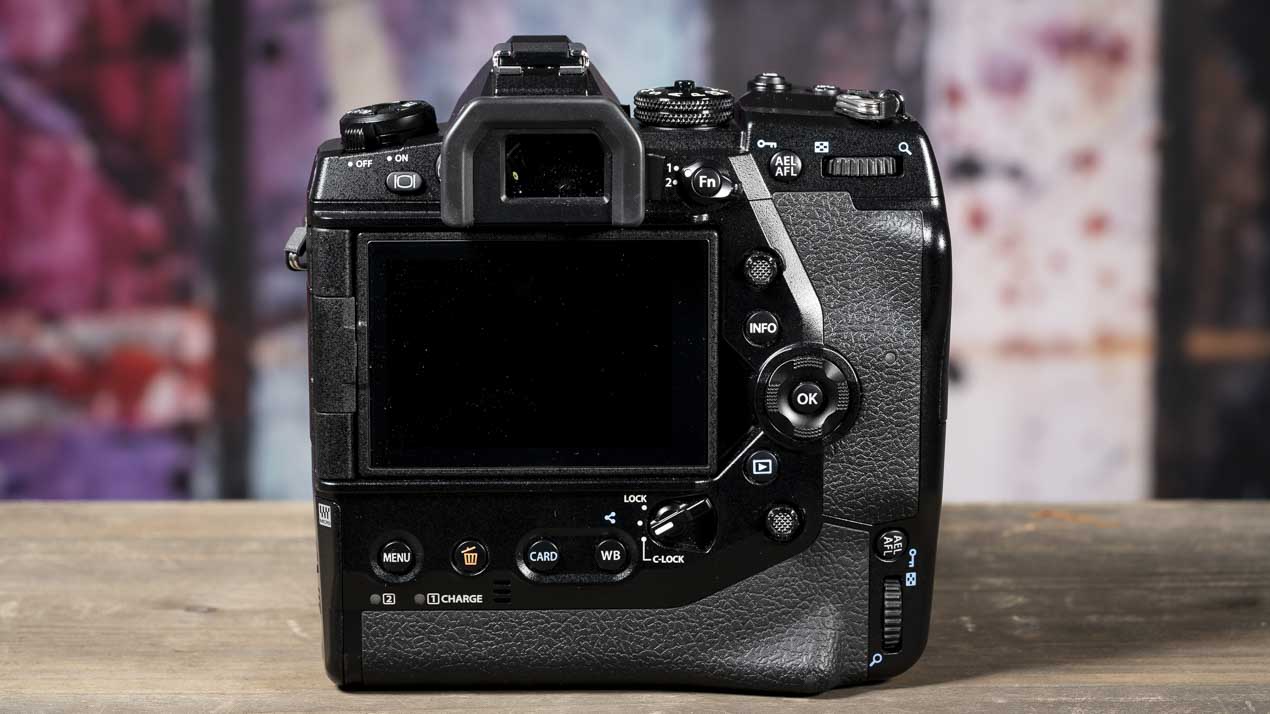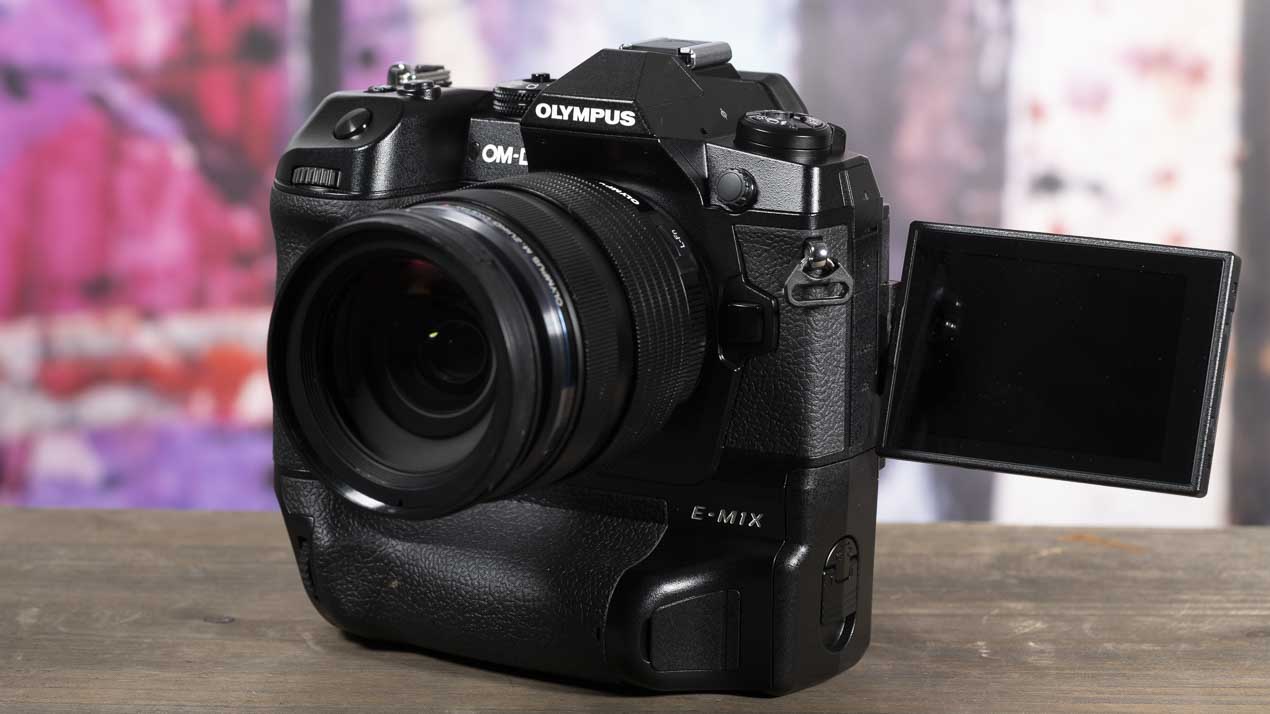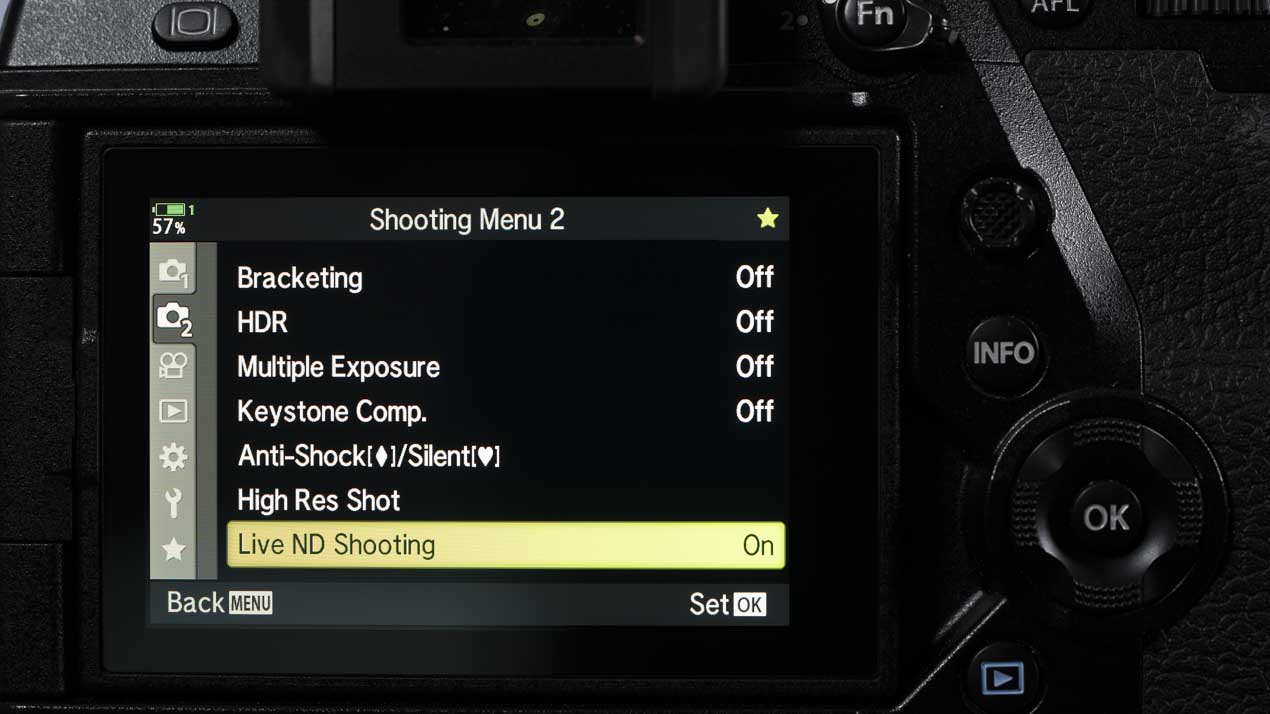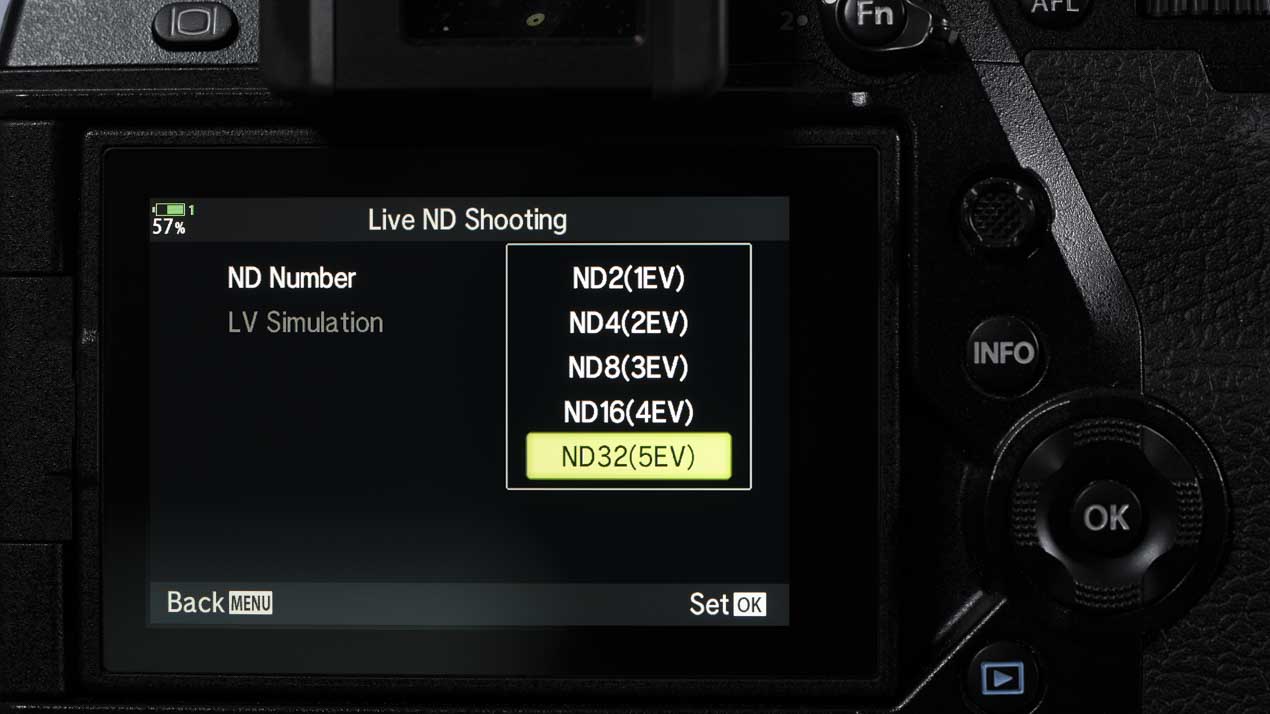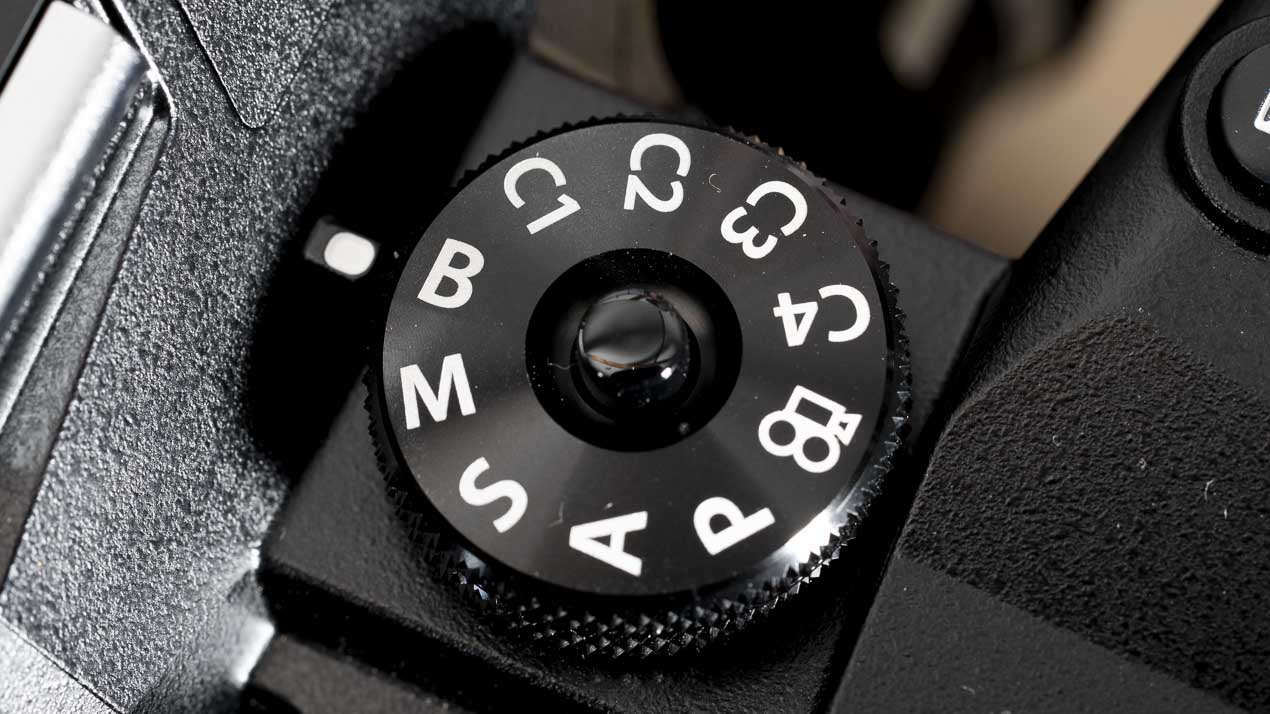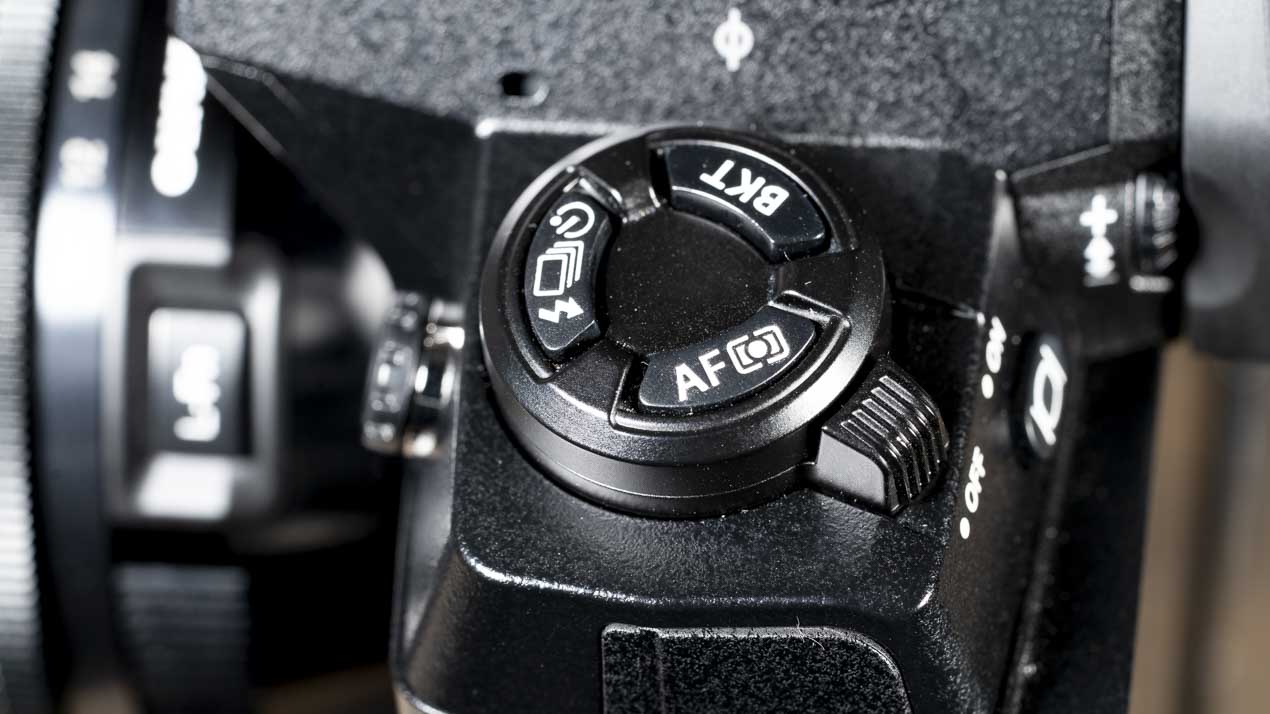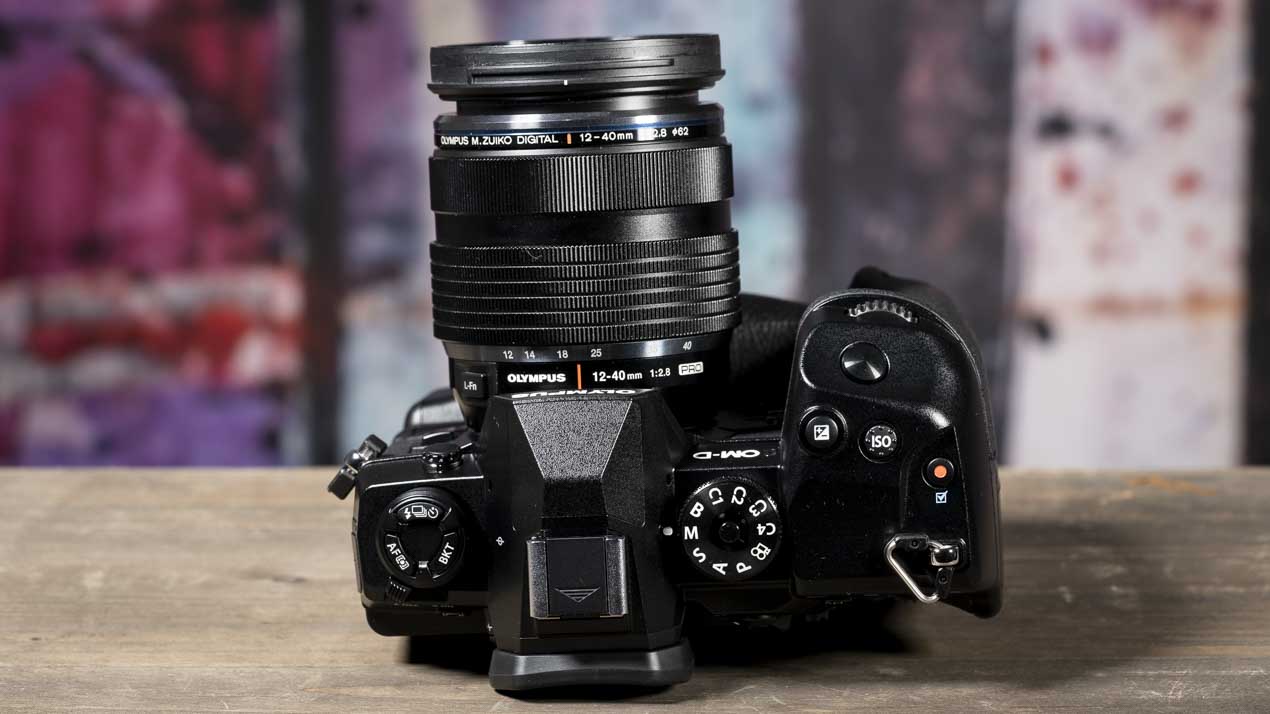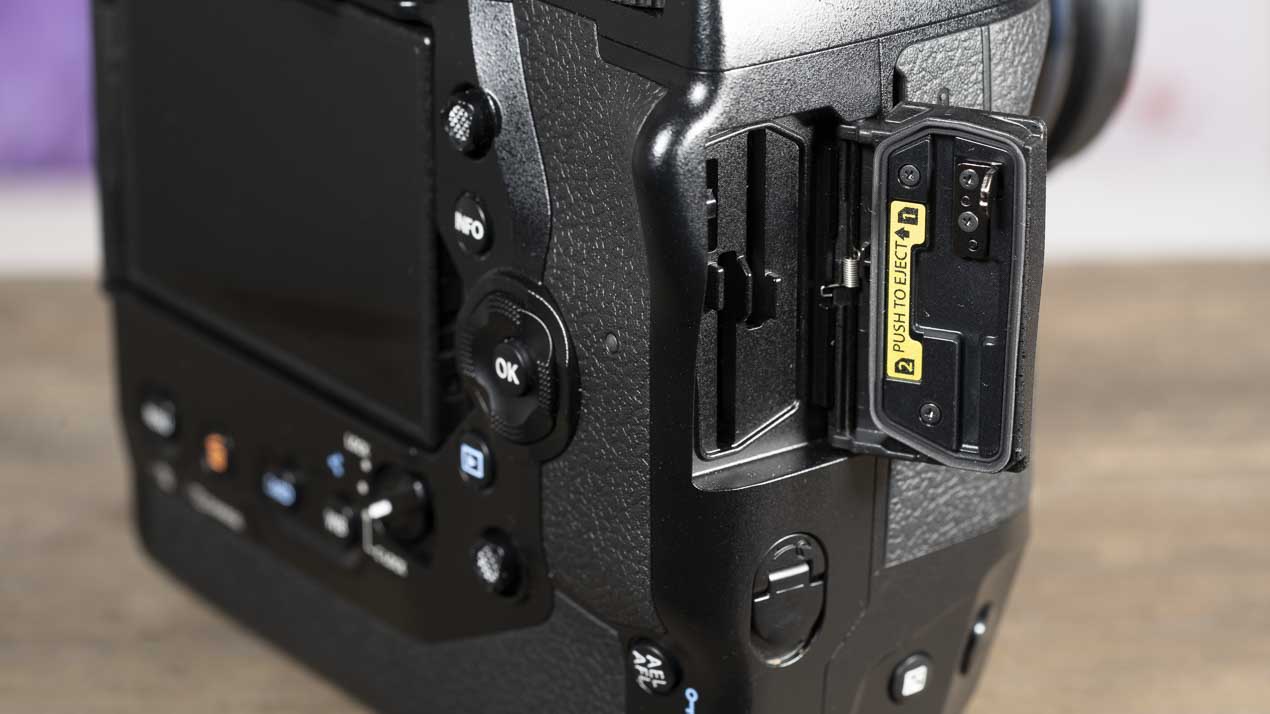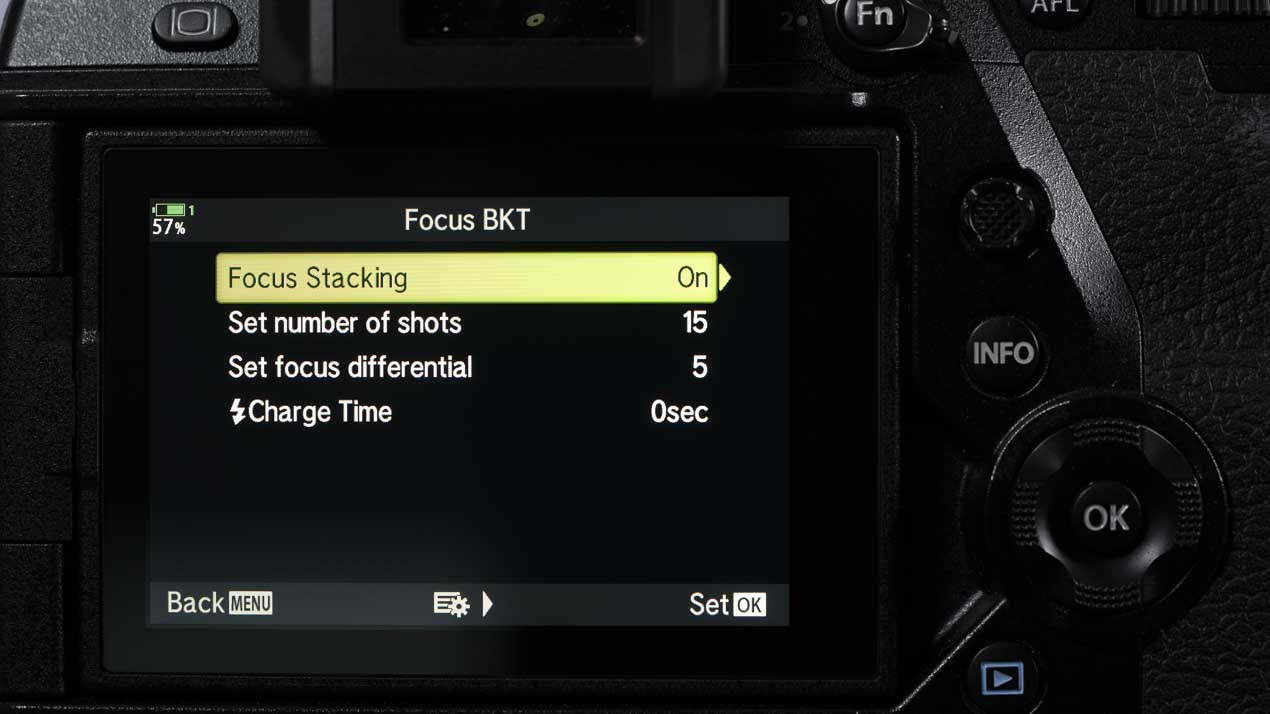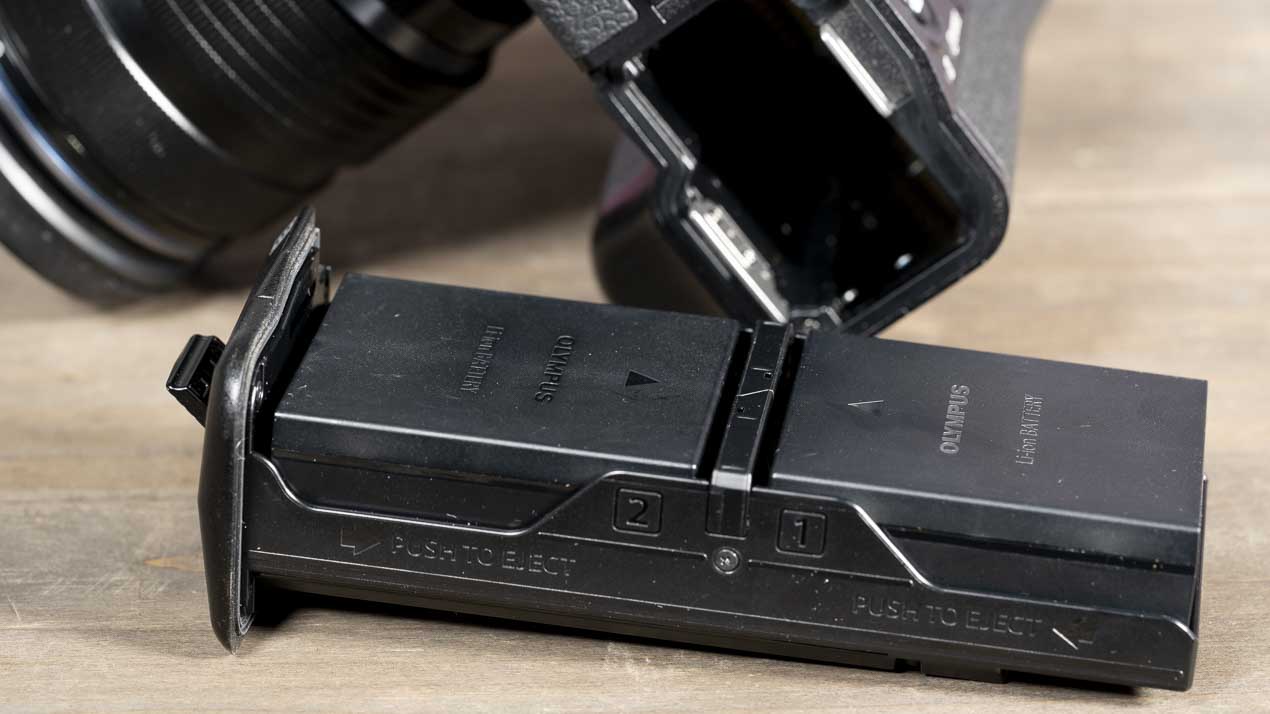Olympus has introduced the OM-D E-M1X to sit alongside the OM-D E-M1 Mark II as a joint flagship camera aimed at professional photographers. Although it has a lot in common with the E-M1 II, the OMD EM1X has some very distinct differences. The most noticeable of these is the integrated vertical grip which houses a battery cartridge that holds two BLH-1 batteries (the same battery as is used in the E-M1 Mark II). These batteries enable the E-M1X to capture up to 2,580 images in a single charge.
It also has two Truepic VIII processing engines rather than one to power a few performance enhancements.
Olympus has focused on maximising speed and durability E-M1X to help it appeal to pros working in tough environments.
Check the price of the Olympus OM-D E-M1X at Amazon UK, Amazon.com, Wex Photo Video, Park Cameras, Adorama, BH Photo Video.
Features
The OM-D E-M1 II has a very good autofocus (AF) system, but Olympus has redeveloped it for the OM-D E-M1X. As before, the imaging sensor has 121 cross-type phase detection AF points but the AF algorithm has been re-worked to boost performance. This also enables the E-M1X to use AF information from recorded images to aid tracking subjects that move unpredictably.
In addition, there’s a selection of new AF settings on the OM-D E-M1X. These include a 25-point target mode and custom AF area settings. Most exciting, however, is the new intelligent subject detection mode. This allows you to set the camera to detect specific subjects automatically. At the time of writing, this is limited to Motorsports, Airplanes and Trains, but more are promised and wildlife seems a given.
According to Olympus, the current selection of targets was chosen as they move fairly predictably and have a fixed shape. Animals are less predictable and their shape changes depending on what they’re doing.
Further good news is that the AF point can be selected using a mini-joystick multi-selector control on the back of the camera. There are two of these controls so there’s one in easy reach whether you’re using the horizontal or vertical grip.
Olympus has also boosted the AF system’s sensitivity and it’s claimed to operate at -6EV.
Continuous Shooting
Naturally, the OM-D E-M1X has Olympus’s Pro Capture mode for shooting stills of very fast action. Thanks to the dual processors, there’s no blackout in the viewfinder when this is in action.
In Pro Capture High mode, the shooting rate is 60fps (frames per second) but the focusing is fixed at the start of the sequence. Switch to Pro Capture Low, and you can shoot at 18fps with continuous focusing.
Pro Capture mode is designed to help you record fleeting moments that are easily missed. To that end, when it’s activated the camera starts writing images to the buffer as soon as the shutter release is half-pressed. Once the shutter button is pressed fully, the 35 images that were buffered immediately before it was pressed are recorded along with 100 from immediately after.
There’s also a standard sequential shooting mode that uses the mechanical shutter. When this is in action, the maximum shooting rate in single AF mode is 15fps for 143 raw files. In continuous autofocus mode, the maximum is 10fps for 283 raw files.
The Olympus OM-D E-M1X also features an anti-flicker shooting mode in which it detects the flicker frequency of artificial light sources and sets the shutter to fire at peak brightness. This reduces the chance of exposure and colour variation between successive shots.
This mode also reduces the appearance of stripes that can be visible in shots taken using the electronic shutter (in Silent Mode and when shooting movies) in artificial light.
High Res Shot Mode
Olympus has also improved its High Res Shot mode for the OM-D E-M1X. There’s now an 80Mp Tripod mode and a 50Mp Handheld High Res Shot mode. The latter uses the natural camera shake to supply the sensor movement and creates a composite from 16 images.
The in-camera Focus Stacking mode has been improved by enabling the composite to be made from between 3 and 15 images. In addition, the crop which results from the change in the focus distance is shown in the viewfinder before you take the first shot.
Image Stabiliser
Olympus’s 5-axis Image Stabiliser (IS) is the best around. It’s enabled me to use exposures of 2 or 3 seconds when hand-holding the OM-D E-M1 II with a wide-angle lens. However, the OM-D E-M1X has a new gyro sensor and this has improved the IS performance. Olympus claims it gives 7.5EV shutter speed compensation with the M.Zuiko Digital ED 12-100mm F4.0 IS PRO at a focal length of 100mm (35mm equivalent: 200mm). That’s the highest figure we’ve seen to date.
Helpfully, the IS also works in video mode and you can also adjust the level of stabilisation that’s applied.
Video
Like the OM-D E-M1 II, the E-M1X is capable of shooting Cinema 4K (4096 x 2160) video. However, it also has OM-Log400 mode that results in flatter footage that has more scope for grading.
In addition, Full HD footage can be shot at up to 120fps (frames per second) for slow-motion playback.
And as I mentioned earlier, the 5-axis IS is available, along with electronic stabilization to help produce smoother movies.
Shooting C4K video, or continuous still at high frame rates can generate a lot of heat. To help deal with that, Olympus has built-in a heat pipe to conduct heat away from the sensor and ensure reliability.
Live ND Mode
The EM1X debuts Live ND Shooting with a built-in neutral density filter available in 5 strengths from 1EV to 5EV. It’s an evolution of Olympus’s clever Live Composite technology. It enables you to extend the shutter speed by up to 32x using the in-camera filter.
As a result, you can shoot long exposure images in daylight but you don’t need to carry a collection of filters or filter adapters.
What’s more, the effect of the filter is previewed in the viewfinder and on the screen, so you can adjust the strength of the filter to give the result you want.
The built-in filter system would also useful for videography to enable the 180-degree shutter rule in bright light, but sadly it only operates with stills.
- Find out how to use the Olympus Live ND Shooting mode
- Read: What is the 180-degree shutter rule when shooting video?
Memory Cards
Shooting C4K video or stills at high frame rates means you need a fast memory card to get decent burst depth. While the E-M1 II has two SD card slots, only one is UHS-II compliant, the Olympus OM-D E-M1X has two UHS-II SD card slots.
Additional Features
Olympus has borrowed from its Tough range of cameras and given the OM-D E-M1X a built-in GPS sensor, temperature sensor, manometer and compass. As well as being able to record the location as longitude and latitude, these enable the camera to save the temperature, elevation, and direction of the shot.
Olympus was the first manufacturer to offer a dust reduction system in its digital cameras. The OM-D E-M1X has an improved Super Sonic Wave Filter (SSWF) with a coating that vibrates 30,000 times per second to shift dust and dirt. This is claimed to reduce the chance of dust marks spoiling images by a factor 10.
Wireless tethered shooting is also set to be possible using ‘Olympus Capture’ camera control software.
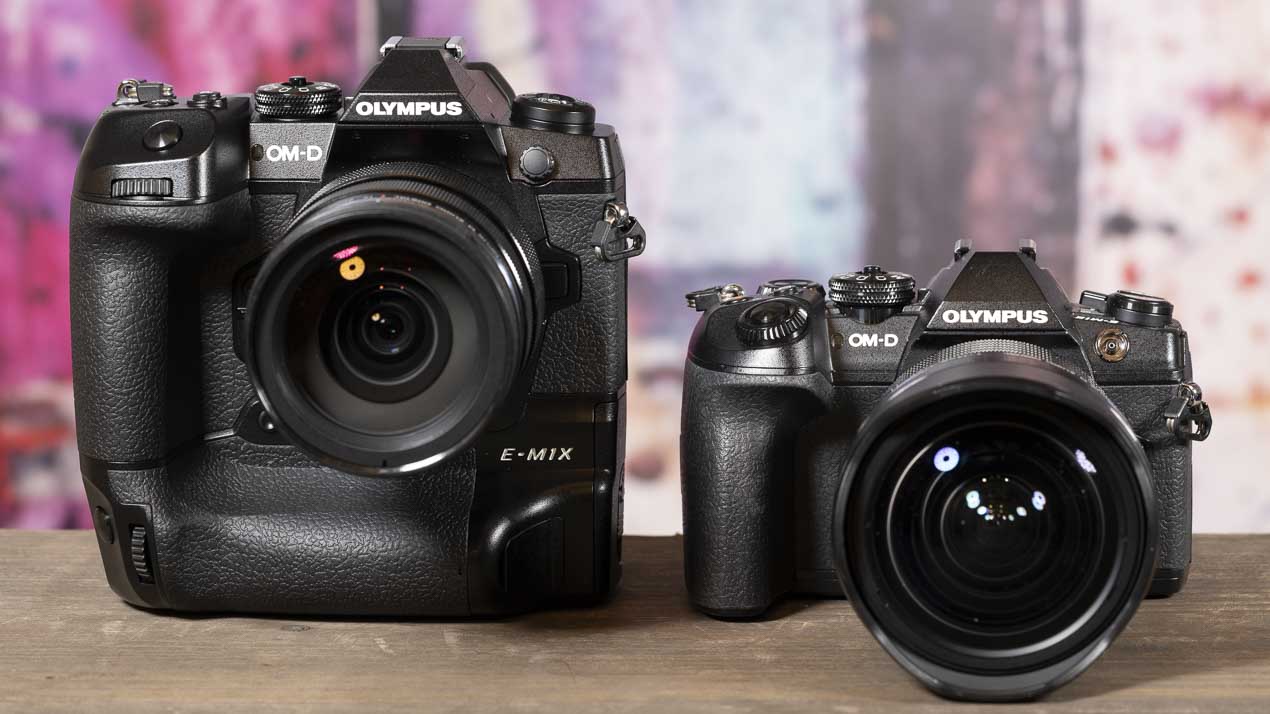
Left: Olympus OM-D E-M1X
Right Olympus OM-D E-M1 II
Key Specifications
[table id=96 /]
Build and Handling
Olympus has designed the OM-D E-M1X with professional sports and wildlife photographers in mind. So while it can be used with wide-angle and small prime optics, its hefty grips ensure you have a firm hold when big, long lenses are mounted.
According to Olympus, the E-M1X is also the world’s most dust-proof, splash-proof and freezeproof (-10°C) camera. The company’s own test conditions are more rigorous than IPX1 and it meets both. Furthermore, connecting headphones, a remote cable or a mic to the cameras doesn’t breach the dust-, splash- and freeze-proofing.
That’s reassuring for anyone who needs to shoot in harsh weather or dusty conditions.
The OM-D E-M1X certainly feels nice and solid. The tough locks and clearly visible sealing on the card and battery ports give it a very durable feel. In addition, the shutter has a claimed life of 400,000 actuations.
The twin grips have the same ergonomic shape and they provide a very comfortable, secure hold if you have medium to large hands. Photographers with small hands may find they struggle to get a comfortable grip.
Both grips have the same cluster of controls around them so that you can make settings changes without having to think about which orientation you’re shooting in. I find the joystick within easy reach of my right thumb whichever grip I use.
Naturally, the video record button only appears on the top-plate.
The Olympus OM-D E-M1X isn’t just bigger than the E-M1 Mark II because of its integrated vertical grip, every dimension is longer. That means that there’s more space for the controls and as a result, Olympus has configured things a little.
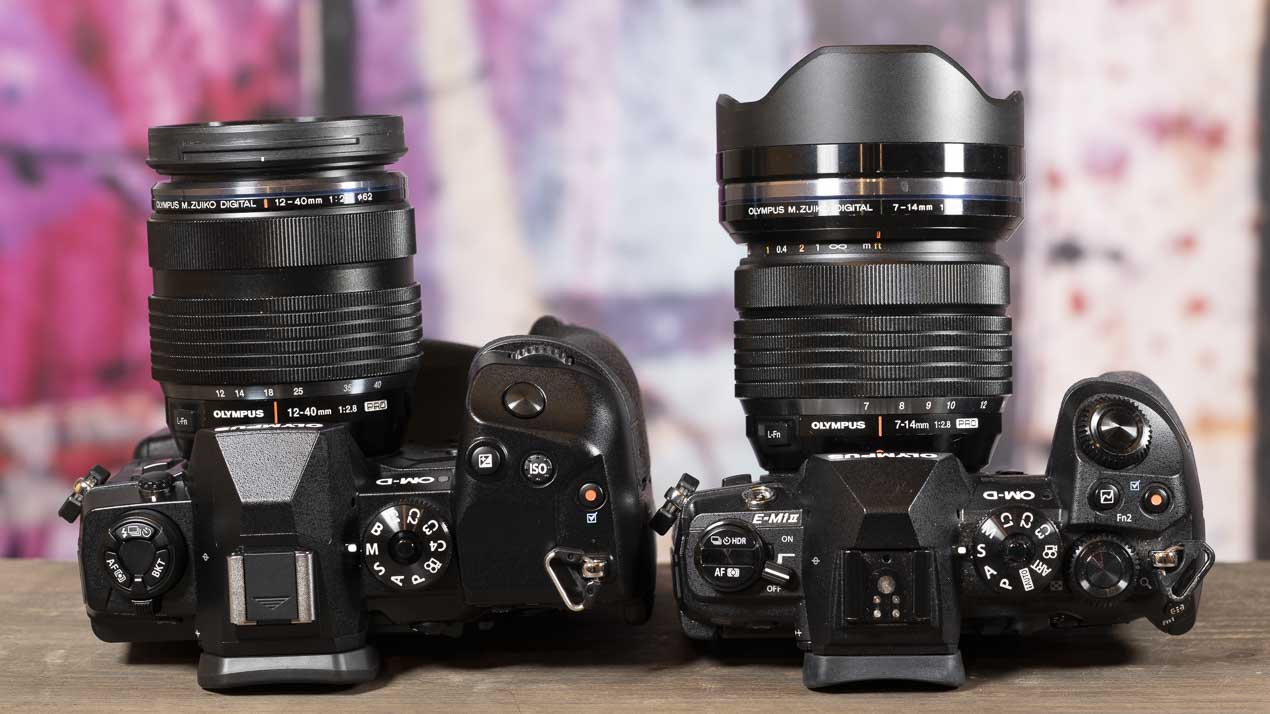
Left: Olympus OM-D E-M1X
Right Olympus OM-D E-M1 II
Control Layout
In a change from the OM-D E-M1 II, the OM-D E-M1X’s dual control dials are the partially visible type. And the mode dial on the right of the top plate has a new B setting to access Live Bulb, Live Time and Live Composite mode quickly. That’s a sensible change.
This dial also gains a fourth Customer mode setting but loses the Art Filter setting. The Art Filters are accessed via the menu or Super Control Panel with the other colour settings.
Over on the left of the top-plate there are buttons to access the metering, focusing, bracketing, flash and drive mode options. A long press of the bracketing button reveals the options for selection. Once you’ve set-up the bracketing as you want it, you can turn it on and off with just a quick press of the button. An icon on the screen reminds you if bracketing is activated.
My Menu
It’s also good to see a new customisable My Menu section in the main menu. There’s a really quick and easy way to add features to it as you scroll through the menu. Instead of having to open the My Menu screen and select an ‘add features’ option, and then find the feature you want to add, with the OM-D E-M1X, you can add features by pressing the Video Record button as you find them in the menu.
Pressing the record button reveals a series of stars that indicate the page number of the My Menu screen. You just select the one you want to add the feature to.
It’s a really neat method of creating your My Menu selection.
A switch on the back of the camera allows you to lock the controls so that settings cannot be changed. However, in a really neat move, there’s also a C-Lock option that can be customised. This enables you to specify which controls will be locked.
Viewfinder
Like the E-M1 II, the Olympus E-M1X has an electronic viewfinder (EVF) with 2,360,000 dots. However, the magnification has been boosted to 0.83x (35mm equivalent) and the refresh rate is 120fps while the display lag is just 0.005sec.
That means you get a clear view of fast-moving subjects with no tearing or noticeable lag. However, the resolution seems out of step with other high-end cameras which feature 3,686,400-dot EVFs. And it really suffers in comparison with the 5,760,000-dot OLED EVFs in the Panasonic Lumix S1 and S1R.
And I’m not convinced that the larger magnification in comparison with the E-M1 II is a good thing. The image is larger but it doesn’t look as smooth or crisp. In addition, the finder lacks some dynamic range and images appear to be losing the highlights a bit earlier than they actually do.
Vari-angle Screen
As before, the viewfinder is paired with a 3-inch 1,037,000-dot touch-sensitive screen on a vari-angle hinge. The touch-control is nice and snappy so it’s disappointing that you can’t use it with the main menu.
Like the viewfinder, the screen provides a good view of the scene. A vari-angle screen is ideal for those who like shooting from high or low angles because you can see the image whether you’re shooting in landscape or portrait format without getting dirty knees or needing a stepladder.
Again Olympus hasn’t exploited the full potential of the touch-control. The Quick menu options, for example, can be selected with a tap, but the main menu options can’t. It would be easier if there was the option to use the screen to select anything you want.
Taking More Control
While it’s easy to find the EM1X’s basic controls, there’s a lot more beneath the surface. Setting up the custom AF area takes a bit of getting your head around, for example. And had I not been told about the quick method of assigning features to the My Menu, it might’ve taken me a while to spot it.
It’s clear that the Olympus OM-D E-M1X is a complex camera. It offers an impressive wealth of features that take some getting to know. It also allows a good level of customisation, so that it can be tailored to suit different photographers.
Performance
Olympus isn’t making any great claims about improved image quality from the OM-F E-M1X in comparison with the E-M1 II. However, it’s certainly capable of producing high-quality images and it feels a bit faster all round.
In the Natural Picture Mode, the colours are quite vibrant, but I don’t think it’s excessive. The auto white balance system does a good job but I prefer the very slightly warmer results produce when the ‘Keep Warm Color’ option is active.
One thing I discovered is that if you’re shooting in the shade of a forest at this time of year, you need to set a custom white balance. Otherwise, if you use the AWB or daylight setting, you’re likely to get very green results.
When paired with one of Olympus’s high-quality lenses, and at low sensitivity (ISO), the OM-D E-M1X captures plenty of detail and images seem to pop from the screen. Fine details like fur or feather look very natural, especially in the raw files.
Autofocus
Olympus introduced me to the E-M1X just before Christmas at an indoor go-kart track. With no windows and fluorescent tubes over the track, the light inside was atrocious. However, the E-M1X’s autofocus system coped well.
I tried setting the AF Tracking system to Motorsports and it latched on to the driver’s helmet on several occasions. However, in the very low light, I found using a single point or a small group of points more successful. Not only did the camera get the speeding subjects sharp, it kept them so. The last time I shot go-karting in similar conditions I was using the Nikon D5 and the Canon EOS-1DX Mark II, and I think the OM-D E-M1X had a higher hit rate.
I took a full-production sample of the Olympus OM-D E-M1X to a local heritage railway centre and sparked up the Train detection mode. Oh wow! I was amazed at how quickly it spotted trains in the frame. And not just whole trains or the front or side profile, it also detected details at close quarters. It also kept the trains sharp as the chugged up and down the track.
Without the intelligent subject detection, the AF Tracking system is a bit less impressive. It failed to keep up with my dog racing for a ball, for example. However, I find it very useful for everyday photography. It allows you to set an AF point on your subject and then move around, shooting from a range of angles while the camera keeps it sharp.
It worked brilliantly with a peacock for example. With a female around, the male peacock was going nowhere. I put the AF point on his head and the camera tracked it as he moved to keep an eye on his mate.
Image Quality
The E-M1X has the same sensitivity range as the E-M1 II, ISO 64-25,600.
At low sensitivity (ISO) settings there’s a good level of detail visible and out of focus areas are handled well.
Although most look fine at normal viewing sizes, at higher sensitivity settings the Jpegs start to suffer from the consequences of noise reduction. Very fine details in ISO 1000 images, for example, look a little smudgy in places at 100%. And images taken at the uppermost setting (ISO 25,600) look rather smoothed at 100% while the raw files have lots of luminance noise.
The highest native (non-extended) setting is ISO6400. I would aim to go no higher than that with the OM-D E-M1X. And if I could, I’d stick to ISO 3200 or lower. That could be an issue for serious sports photographers looking for a smaller lens system.
Long Exposures
I haven’t had the M.Zuiko Digital ED 12-100mm F4.0 IS PRO at the same time as the E-M1X, so I can’t fully test Olympus’s 7.5EV claim for its Image Stabiliser. However, I’m able to get sharp images with the 7-14mm lens at 14mm (28mm in 35mm terms) when using a shutter speed of over 3seconds to blur the movement of water. And I can shoot at 1sec or more with the 12-40mm f/2.8 lens and get sharp results.
I love shooting handheld exposures of a 1/15sec or longer in crowded areas. It blurs the movement but with a good IS (or a tripod), buildings are kept sharp. Being able to shoot these kinds of images without a tripod is a bonus in a busy city.
The in-camera ND filter also proves useful for enabling even longer exposures when the camera is mounted on a tripod resting on something solid. I was also able to use this handheld and get a good level of blurring of water without a tripod.
While the IS system is impressive when you shoot stills, it’s mind-blowing with video. I shot from a slow-moving train and although I was struggling to stand still, the footage is very smooth. Without the IS it would be unwatchable.
Dynamic Range
Having a smaller sensor than the recent crop of full-frame cameras gives the Olympus OM-D E-M1X a disadvantage for dynamic range. Nevertheless, I find I can brighten raw files by up to around 3Ev if necessary. There’s an increase in luminance noise visibility, but it’s not too bad. However, if you’re looking to preserve highlight detail and brighten the shadows post-capture, I’d try to keep to a 2-stop reduction in exposure.
Focus Stacking and High Res Shot Mode
The E-M1X’s Focus Stacking and High Res Shot modes are very good. The Focus stacking does a good job of merging the images without creating ghosting in most cases. I experienced a little ghosting around one element in a scene, but it was very close and it extended into the far corner of the frame. It’s also possible that there was a little movement of the camera, but the rest of the scene looks great. And, of course, it’s sharp from front to back.
The High Res Shot mode also delivers larger and more detailed images. The 50Mp Handheld mode captures the images quickly but then takes a little longer to render the final shot than the Tripod mode. Comparing the results with standard images reveals a nice jump in the level of detail.
Similarly, the 80Mp tripod mode delivers impressive results. It gives a significant boost to the size of print that you can make. That compositing also has a beneficial effect on the dynamic range as there’s more detail visible (and extractable) from the shadows.
Battery Life
I’ve now shot extensively with the E-M1X and I find no reason to doubt the 2850-shot life claimed for the two batteries supplied in the box.
It’s also handy that the batteries are carried in a cartridge as they can be removed without having to remove a quick release plate.
For those who like to travel light, it’s good to know that both batteries can be fully charged in around 2 hours in-camera using the USB connection. Helpfully, the camera will also function when only one battery is installed. So if necessary, you could charge one battery while using another.
Sample Images
Check the price of the Olympus OM-D E-M1X at Amazon UK, Amazon.com, Wex Photo Video, Park Cameras, Adorama, BH Photo Video.
Verdict
There will be some people who are scratching their heads over the Olympus OM-D E-M1X. It uses a Four Thirds sensor and the Micro Four Thirds mount, yet it’s a big, heavy camera. In fact, it weighs 849g body only and 997g with its two batteries and memory cards. That’s only 8g lighter than the full-frame Nikon D850 with its battery and an XQD card. It’s also heavier than the full-frame Sony A9 (673 g with battery and card).
However, the OM-D E-M1X is a double-grip camera. It’s designed to be comfortable to use with large lenses. Of course, thanks to their 2x focal length magnification factor, Micro Four Thirds lenses have a considerable size and weight advantage over full-frame optics. But the M. Zuiko Digital ED 300mm f/4.0 IS PRO, for example, still weighs 1270g. That’s a lot less than a 600mm f/4 full-frame lens weighs. The Nikon AF-S Nikkor 600mm f/4E FL ED VR weighs 3,810g, for example. But you need a decent grip and strong lens mount to use a lens that weighs over 1Kg.
Olympus is interested in the overall weight of your kit rather than the weight of the camera. And it’s not a bad tactic. One of the biggest criticisms levelled at the Sony A9 and A7-series of full-frame cameras is that the bodies are impressively small but the lenses are big and heavy.
Speed and Reliability
There’s more to the E-M1X than a second grip over the E-M1 II. The dual processing engines make it faster to start up, and it can do more in less time. It’s the power behind features such as Live ND, Handheld High Res Shot modes and the intelligent AF system.
The enhanced sealing and the new heat dispersion system also make the E-M1X Olympus’s most reliable camera.
And in many ways, the Olympus OM-D E-M1X is a brilliant camera. It has really clever, useful features. The image stabilisation, AF Tracking system and Live ND Shooting are off the scale. They make it easy to shoot great images in tricky situations.
However, the E-M1X’s price seems steep for a camera with a Four Thirds type sensor.
Next Steps
At Photokina 2018 we had a heavy hint that Olympus will be bringing out some more high-quality telephoto lenses, and the E-M1X seems like the perfect camera to mount them on.
The AF system also impresses and I’m looking forward to seeing how Olympus develops the tracking system. The company’s engineers need to get wildlife and various sports recognition rolled out as soon as possible. Sony is rolling out Animal Eye AF and it’s excellent – at least with dogs and cats. Olympus needs to match it with wildlife and sport focusing capability to help the E-M1X compete.
A combination of smaller, lighter and more affordable long telephoto lenses, along with a reliable AF Tracking system could make the Olympus OM-D E-M1X very appealing to wildlife photographers who need to carry their kit over long distances.



